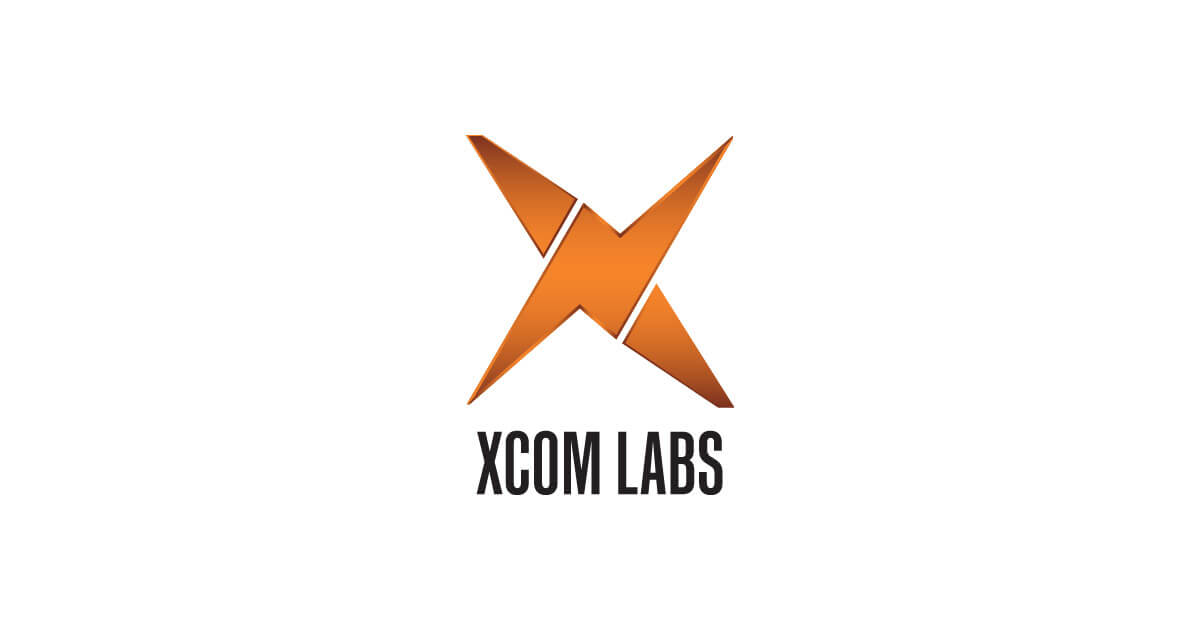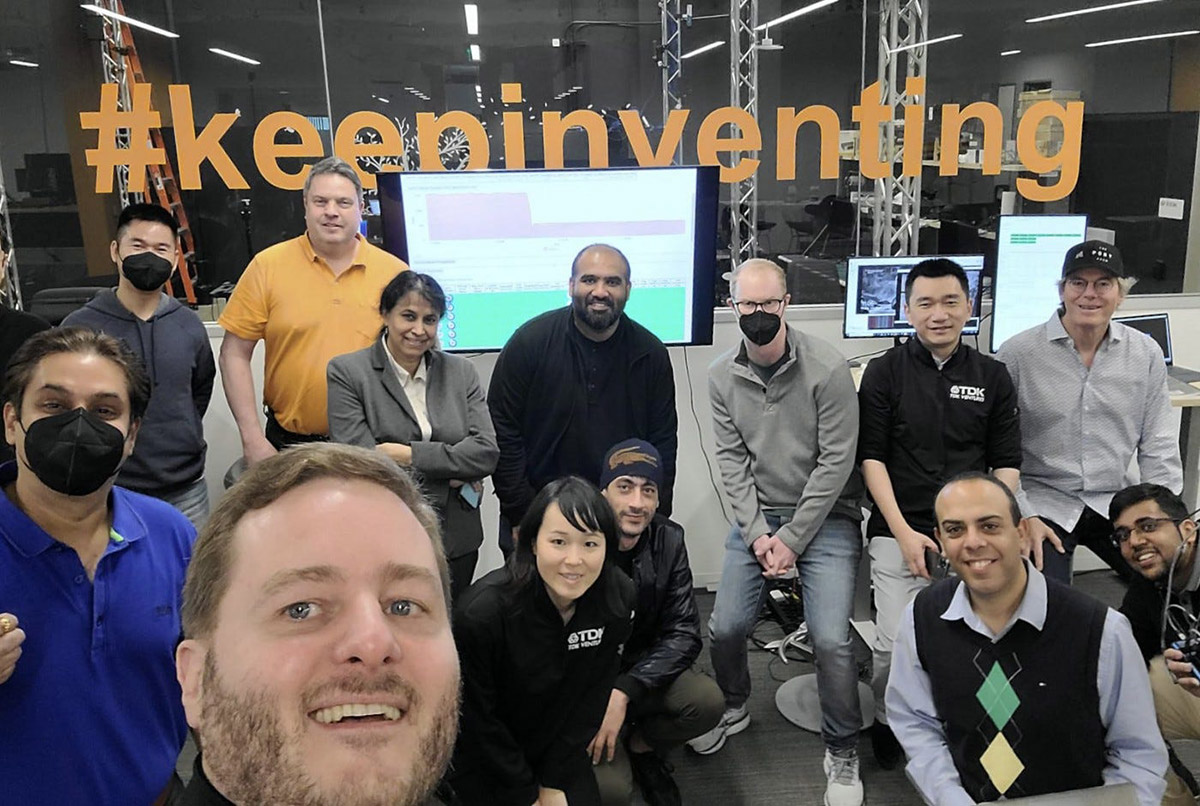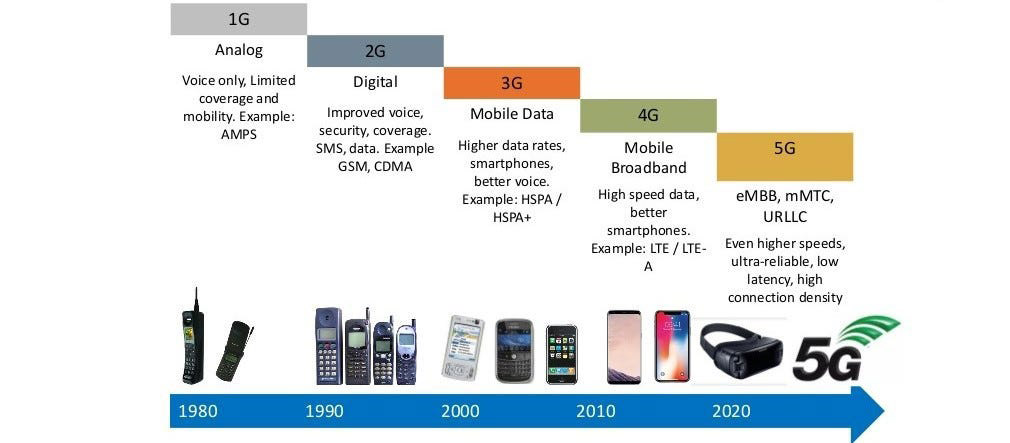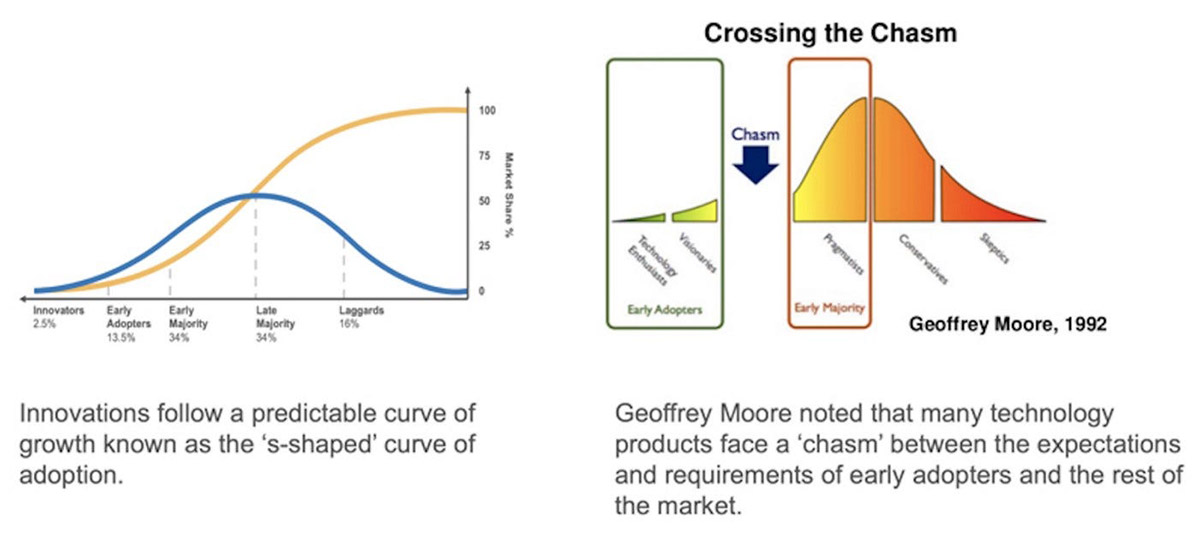Guest post by Henry Huang — Investment Director, TDK Ventures
Overview
To enable our vision for digital transformation and to tap into the oncoming metaverse megatrend, the TDK Ventures team has conducted comprehensive studies in the world of connective and computing deep tech, searching for the next paradigm shift. Coming back from our deep exploration — XCOM Labs has shown us the way forward as the next generation in wireless and multimedia technology that can enable the massive implementation of metaverse application. To achieve this, they have addressed many longstanding challenges by developing novel antenna and processing technology based on Open Radio Access Network (Open RAN) architecture to improve network capacity and ease of deployment, advancing both sub 6GHz and millimeter wave techniques to increase the bandwidth and robustness, implementing unique split rendering technology to reduce overall latency, user device size and power use. The result is a truly immersive experience and the future of accessing the digital metaverse world.
In this article, I would like to share my investment journey as we chose to build an exciting partnership with the XCOM team and explain the thinking that got us there. This is just the beginning however, as we look to scale its impact and foster their passion.
Introduction & Technical Evolution
Innovations in connectivity and computing technologies over the last several decades have transformed the way we live and work. Access to the internet has increased exponentially around the globe, and upload/download speeds have soared. Now we can connect with each other anywhere in the world at the touch of a button. The age of digital transformation has given humanity a never imagined level of connectivity through the power of dynamic edge computing and agile networks.
While meteoritic, the progression of these technologies certainly has not been overnight. As a benchmark, take mobile phone generations as they have evolved over the years. What we would now consider as “1G” came about in the early 1980s with a foundational innovation that would change our ability to wirelessly communicate. Later, about every 10 years, a new generation emerged. 2G came with improved voice and text messages, then wireless internet access (3G), and then 4G which began to leverage the idea of edge-computing, linking our devices to the cloud thus enabling efficient processing and data handling, including mobile broadband access [1]. The download speeds saw an incredible jump upward from a few Mbps in 3G to tens of Mbps in 4G LTE.
Figure 1. Mobile technology evolution [1].
Now, 5G, the newest generation of mobile network technology has arrived — supporting data rates an order of magnitude higher (100’s of Mbps), and undeterred by large numbers of simultaneous devices with low latencies valuing at tens of milliseconds. As new millimeter wave spectrum is made available, mobile operators are pushing the throughput to the Gbps range [2].
Mobile phones and networks are just one flagship example, computing and connectivity technologies are pervasive and now impact almost all aspects of our lives — and the COVID-19 pandemic has only magnified the importance of these innovations. It is no longer enough to be just surfing the internet or streaming videos, but we need to be able to interact and feel immersed in the virtual environments.
Innovators from around the world rose to the challenge. Google and Microsoft needed to ensure their systems could perform under a massive influx of interactive users. Roblox, Niantic, Magic Leap, and their augmented and virtual reality (AR and VR) technologies began to expand from entertainment into the everyday life and enterprise environment. Ideas from Industry 4.0 provided inspiration to learn from data, not just for manufacturing, but for collaboration, education, construction, telemedicine, and other applications. Really, it has been within the past few years that the coalescence of all these technologies has led to the next big paradigm shift in the world of connectivity and computing — the metaverse.
When the word metaverse is mentioned, the underlying meaning is sometimes blurred by overlapping concepts and related names. More than video game, more than Facebook’s new corporate umbrella, the metaverse is the immersive digital environment being organically built across applications to enable many simultaneous users to connect and interact with each other within a multitude of social environments digitally and/or physically augmented by digital input/output. It is the logical culmination of advancing the computing and connectivity capabilities to enable efficient and effective human interaction with massive amounts of information being processed and transferred at lightning speed.
Figure 2. Conceptual images on the development of the immersive digital environment technologies [3–4].
Limitations and Technical Challenges
Despite so much technical evolution over the past decades, progress is never ending and the promises of the future demand more. Yet the metaverse is the next great connectivity and network infrastructure challenge in the evolution of the internet. In a world where the graphics will have to be rendered on-screen in direct response to where the user is focusing via the headset, things will need to move an order of magnitude faster. This is going to require vast enhancements in capacity and fundamental shifts in how networks are architected and deployed. We believe the technical challenges in the field of connectivity come down to the following essential characteristics:
-
- Increased bandwidth (and symmetric bandwidth) above Gbps
The vision for the metaverse involves massively immersive experiences with three-dimensional graphics being rendered in real time, with incredible resolution and high polygon count along with interactive features that will require massive amounts of data. To handle this volume of information and not take away from the interactive user experience, the network will demand a throughput of over Gbps and beyond.
Historically when increasing speeds in connectivity, most progress has been in the ability to quickly download information. In contrast, while upload speeds have of course improved, they have consistently lagged. For immersive metaverse environments, this is no longer the case, upload and download speeds will need to be almost equally fast and efficient.
-
- Low latency below 10 milliseconds
A low latency environment is fundamental for users to feel immersed in the metaverse to the same level as they would in the real world. The motion to photon (MTP) latency, the time it takes for the user’s action to be reflected on the display screen, needs to be below the human perceptible limit to allow users to interact with holographic augmentations seamlessly and directly. For instance, in the registration process of AR, large latency often results in virtual objects lagging behind the intended position, which may cause sickness and dizziness [5].
Current last mile fiber networks and 5G connectivity can almost achieve the latency in the range of low double-digit milliseconds. But metaverse isn’t only about the last mile network, but the middle mile network that connects users to the cloud. Latency-sensitive applications require a roundtrip delay in the range of 75–150 milliseconds. The future metaverse applications will need roundtrip latency ranging from single to low double digits to allow graphics rendering to respond to where the user’s eyes are focusing. The real-time split rendering over edge cloud and local will play a significant role in the coming years [6].
-
- Immersive video streaming beyond 4K
Even 4K will not be a good enough resolution to convey the pixels needed to create high quality immersive worlds. Standard smartphones currently require 1.3–1.6 Mbps of downlink throughput to stream a 720p video, which is sufficient to achieve human retinal resolution at arm’s length. But on a head-mounted display sitting just centimeters from the eyes, retina grade resolutions will need to be much larger. Solving this problem will require innovations across both the hardware and software stack [6].
-
- Real time cooperation between network entities
Today, traffic optimization is done by network operators while content providers do their own optimization. A coordinated real-time integrated process of optimization is required to achieve the consistent quality of experience. The networks need to become more application aware, and the applications need to become more network aware.
TDK Ventures Strategic Outlook & XCOM Labs
In TDK Ventures, we see investing in connectivity and computing is investing in people, tapping into newfound innovations and into markets that previously never existed. It’s not just good for business, it’s good for the world, allowing us all to grow together. The possibilities are endless, and entrepreneurs are already finding a way to change the game — particularly with AR/VR — in fields like gaming, product development, process improvement, and most pervasively: user experience.
We think in the next decade metaverse has the potential to reach one-billion people and create hundreds of millions of jobs. Currently, metaverse and related immersive computing and connectivity industries are expected to break a $1.6-trillion market value by 2030 with a CAGR of 38.3% [7]. Overlapping with the AR and VR enabling technologies alone are expected to add $1.5 trillion to the global economy by the same time frame [8]. 5G and wireless infrastructure are expected to see a market value of over $115 billion by an earlier timeline of 2026 [9].
We understand the innovation and technology adoption often follow S-shaped curves but are subject to chasms across different categories of adopters [10], and metaverse is no exception. Market strategy needs to consider different AR/VR customer groups and their value drivers. We prefer the approach to start with customers that require exceptional connectivity performances earlier on the development S-curve but serve as reference for the next ones as technology improves. Technology’s value creation is also a function of its ecosystem, while the performance improvement is shaped by S-curves in its ecosystem as well [11]. We believe AR/VR technology development and adoption are near the rapid growth stage right now, but a good metaverse commercialization strategy should be based on aligning the customer value proposition with the startup’s capabilities, which could be as difficult and uncertain as developing the technology itself.
Figure 3. Patterns of technology adoption [10].
XCOM Labs
is a team of world-class wireless and multimedia visionaries, who understand both technology and business. The founders — Dr. Paul Jacobs, Mr. Derek Aberle, and Mr. Matt Grob — had led the mobile technology revolution in their executive roles at Qualcomm and are accelerating their mutual vision of the digital future through 5G, AR/VR/XR innovations at XCOM. Based on solid patent portfolio and technological breakthroughs, they have found a way to significantly improve spectrum efficiency, and increase speed and robustness, while also reducing latency and enabling lower cost/power user devices.
They have been able to do this by leveraging the recent developments in the Open RAN architecture to centrally process signals from a group of multiple antennas. Their technology can achieve over 10x potential capacity gains for both downlink and uplink with no change to existing phones or standards. This can enable very demanding applications to scale, which is not possible using existing solutions such as distributed antenna system (DAS) or small cells. It can also simplify network deployment, which is essential for private networks [12].
The technology has also been applied to both sub 6 GHz and millimeter wave bands. Using the globally available 60 GHz band with large amounts of interference-free spectrum, they demonstrated a system that can provide seamless coverage of extremely high bandwidth and low latency by overcoming the well-known blocking challenges of millimeter wave-radio propagation that affect today’s 5G deployment [13].
Thanks to their advanced wireless technology, the XCOM team can deliver one of the smoothest untethered split renderings that enables edge compute. These experts understand that moving media workloads to the network requires an end-to-end system design approach. Compute and communication functions could compete for power, space, and weight within the constraints on the user device. They have mostly decoupled the compute from the headset; therefore, it can afford to upgrade the edge compute or the headset as technology improves and won’t be tied to the deficiencies in headset performance or resolution. There is even the possibility of centralizing the compute so that a single data center could power many locations in roughly the same geographic area.
XCOM is already working to apply their technology to location-based entertainment, education/training, smart factories, and stadiums. This will extend further to telemedicine, tourism, real estate, and more immersive telework experiences, as the team is strategically aligning technology development with customer adoption.
Figure 4. XCOM lightweight hardware and agile networks is making the future of AR/VR arrive a whole lot faster, as they #keepinventing their way to the metaverse. Pictures taken during our team visit to XCOM to experience their innovations firsthand.
Why We Invested in XCOM Labs
These technical specifications are impressive, and the implications are undeniable, but ultimately the question is: How could we know the technology really had all the potential that they claimed? Seeing is believing. Following many deep conversations with their leadership team, TDK Ventures had the firsthand experience to evaluate the XCOM technologies as part of our due diligence and was absolutely impressed by its superb performance. In the XCOM Lab in San Diego, our team members could walk and seamlessly experience the remote 3D immersive worlds — no heavy equipment, no cumbersome interface, just the augmented senses immersed in a digital universe. We haven’t found any other player that can deliver such a smooth high-quality immersive experience in a large number multi-user scenario yet within a compact formfactor. You can read more about their recent demos at the Augmented World Expo (AWE) 2022 [14].
The XCOM Labs team has an inspired vision of the future paved by digital transformation, and their passion is making that vision become a reality. Paul provides strategic direction and builds strong team and partnerships for the company; Derek has laser focus on strategy and execution; and Matt keeps advancing the technology together with a group of the world’s top wireless and multimedia experts. We knew very quickly that the synergy was just right, and together we could build the better tomorrow that we all are striving for.
So, having thoroughly detailed our thoughts and journey as explorers in the frontier of computing and connectivity technology, we are convinced that XCOM Labs is a fitting investment, and a win-win for all those involved. We believe XCOM Labs is a King of the Hill company, full of innovators that we believe have what it takes to make their vision of reality –
- Founders: They are indeed visionary leaders in the industry. The founders’ reputation and background give them unique insight into the path forward to cross the chasms and a rare advantage for leapfrogging growth.
- Team: They have had no problem attracting top talent across a very competitive market, fueling new ideas and robust thinking to their #keepinventing philosophy.
- Track record: They have done this before. The XCOM leaders have a history of successfully leading the global 1G to 5G transformation.
- Technology and Innovation: Based on over 30 years of research, their advanced wireless and multimedia technology has an undeniable advantage — it allows multiple users to move freely and simultaneously through photorealistic and interactive digital environments, both using wireless AR and VR. The technology development is right on the accelerating stage along the S-curve.
- Market Traction: Their advanced RAN solution in both sub 6 GHz and millimeter wave and split rendering are highly differentiated. Strong customer engagement and ecosystem development show across many applications including location-based entertainment, smart warehouse, autonomous vehicle, and private network. Successful field trials and live demos have been conducted with major mobile operators and enterprise customers.
Moving Forward
Innovations in connectivity and computing technologies hold the key to unlocking our collective, digitally transformed, future. While we have seen enormous strides in deep tech over the past decade, further progress will require paradigm-breaking vision to bring about the next generation. Low latency, improved bandwidth, advanced rendering, and more will all be required for the AR, VR, and ultimately metaverse of tomorrow. In partnering with XCOM Labs, the team at TDK Ventures is excited to bring about exactly that.
References
[1] Connectivity Technology Blog. (2020, August 8).
https://www.connectivity.technology/2020/08/two-short-trainings-on-5g-beginners.html
[2] Ericsson Mobility Report. (2022, June). Ericsson.
[3] Metaverse: The Revolution of the Sports World. (2022, February 28). ISPO.com. https://www.ispo.com/en/trends/metaverse-revolution-sports-world
[4] Morse, A. (2022, March 27). The Metaverse Ws on the Way: Here’s What You Need to Know. CNET. https://www.cnet.com/tech/services-and-software/the-metaverse-is-on-the-way-heres-what-you-need-to-know/
[5] Lee, L., Braud, T, et al. (2021, September). All One Needs to Know about Metaverse: A Complete Survey on Technological Singularity, Virtual Ecosystem, and Research Agenda. https://arxiv.org/abs/2110.05352
[6] The Next Big Connectivity Challenge: Building Metaverse-Ready Networks. (2022, February 27). Tech at Meta. https://tech.fb.com/ideas/2022/02/metaverse-ready-networks/
[7] Strategic Market Research. (2022, June). Global Metaverse Market Outlook — 2020–2030. https://www.strategicmarketresearch.com/market-report/metaverse-market
[8] PWC. (2019). Seeing Is Believing: How Virtual Reality and Augmented Reality Are Transforming Business and the Economy. https://www.pwc.com/gx/en/technology/publications/assets/how-virtual-reality-and-augmented-reality.pdf
[9] BBC Research (2021, September). Global 5G Infrastructure Market 2021–2026. https://www.bccresearch.com/market-research/information-technology/5g-infrastructure-market.html
[10] Moore, J. (1991). Crossing the Chasm: Marketing and Selling High-Tech Products to Mainstream Customers. ISBN 0–06–051712–3.
[11] Adner, R. and Kapoor, R. (2016). Innovation Ecosystems and the Pace of Substitution: Re-Examining Technology S-Curves. Strategic Management Journal, 37, 625–648.
[12] ABI Research. (2021). The Role of 5G in ICT Transformation. https://www.abiresearch.com/market-research/product/7780225-the-role-of-5g-in-ict-transformation/
[13] Uwaechia, A. and Mahyuddin, N. (2020, March). A Comprehensive Survey on Millimeter Wave Communications for Fifth-Generation Wireless Networks: Feasibility and Challenges. IEEE Access, Volume 8, 62371–62414.
[14] XCOM. (2022, June 16). XCOM Labs Collaborates with the VOID to Create an Immersive Virtual Reality Experience at AWE USA 2022. XCOM Labs. https://xcom-labs.com/xcom-labs-collaborates-with-the-void/







